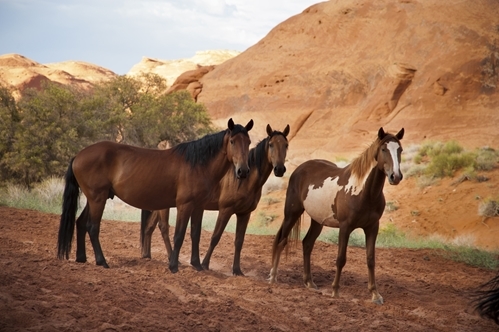Eastern equine encephalitis is a virus that’s transmitted through the bite of a mosquito. It affects a horse’s central nervous system, and if it remains untreated, can eventually lead to death. Though it’s not as common as other diseases, it’s still a noticeable health concern for horses. According to BlandenOnline.com, the state of North Carolina had
12 cases of EEE in 2014. Meanwhile, at least
four horses in Northeast Ohio died in September 2014, The Plain Dealer reported. And in 2015, there’s already been cases reported in
South Carolina,
Florida and
North Carolina.
Given those figures, it’s important that breeders and trainers alike are fully aware of EEE and how it can adversely impact their horses.
The basics of EEE
What often makes EEE so dangerous is its somewhat sudden onset. According to the Louisiana Mosquito Control Association, the disease presents itself within five days of infection, and horses that are not treated properly can die just 48 to 72 hours later. Usually, a horse will come down with a fever, at which point a number of other symptoms might develop, including:
- Loss of appetite
- Agitation
- Drowsiness
- Muscle pain
- Photosensitivity
- Seizures
According to the University of Wisconsin School of Veterinary Medicine, EEE is found mostly in the eastern two-thirds of the U.S., though exceptions can occur. Most cases are also found between the late summer and early fall, and can be exacerbated by especially hot summers. Outbreaks also tend to happen in varying intervals; in Louisiana, for example, these outbreaks occurred in two- to four-year intervals. Regardless, EEE is almost universally fatal without proper treatment, as the disease has a 90 percent mortality rate.
A quick word on birds
Though mosquitos are the ones to actually infect horses, there’s another component involved, according to the LMCA. Birds are referred to as reservoirs for the disease: Though they can’t be infected themselves, a mosquito that feeds on a bird can then pass the disease onto a horse. Birds with the highest prevalence as carriers include the cardinal, chickadee, catbird, blue jay and tufted titmouse. Birds are a rather crucial link in the disease cycle, and areas with especially large populations of these species could be at an increased risk of an EEE outbreak.
The importance of vaccination
The best way to prevent a horse from contracting EEE in the first place is through vaccinations. Foals need to be vaccinated at four, five and six months of age, with an additional booster near its first birthday. Adult horses should also be inoculated, with a booster in the springtime just prior to mosquito season. If there happens to be an outbreak during the summer months, it’s a good idea to administer another booster sometime in the fall. However, before beginning any vaccine program, always consult with a veterinarian beforehand, according to the American Association of Equine Practitioner. They may have a special strategy depending upon where you live, the horses’ prior health and other factors.
Horses living near swamps and ponds are especially susceptible to EEE. The same applies to areas with a high concentration of the black-tailed mosquito, the most common agent of EEE infection. This species lives primarily in marshes and wooded areas and can be found south of Quebec, Canada and as far west as eastern Texas, according to the University of Florida’s Entomology and Nematology Department.
However, most veterinarians will want to run blood tests before assuming it’s EEE. That way, they can rule out any other illnesses, including botulism, moldy corn poisoning and liver failure.
Are humans at risk?
Though humans can get EEE, they can’t be infected directly by horses, according to LMCA. Instead, humans have to be bitten by a mosquito; common signs of infections within humans include nausea, depression, fever and headaches. As such, it’s important for humans to be cautious when dealing with a potentially infected horse, as mosquitos may still be nearby.









